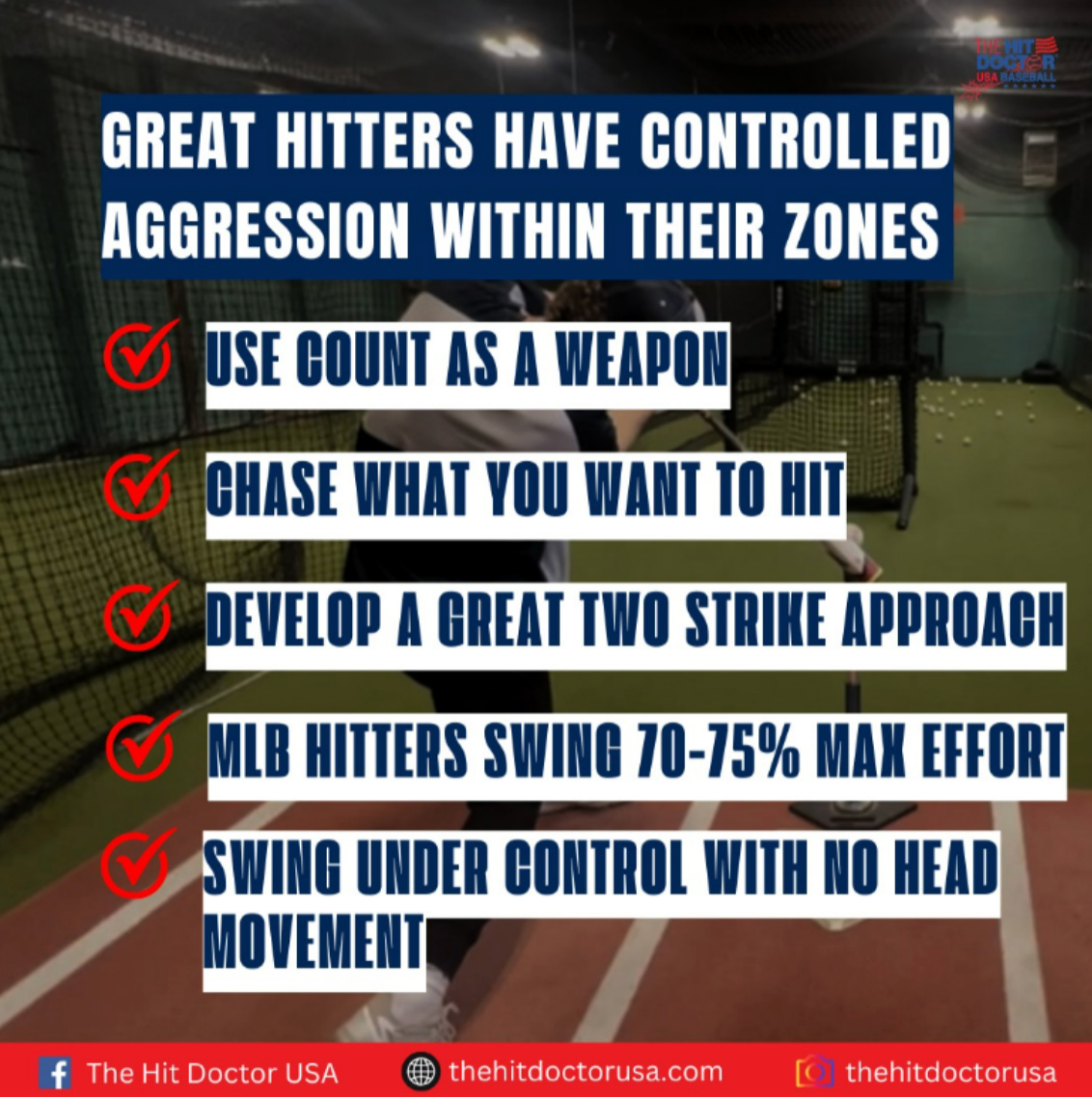
When a pitcher attacks a hitter, he has a lot of things going for him. He has as many as 4-5 pitches he can throw at various speeds and as many as 9 locations. If that’s not enough he has eight other guys besides himself who can catch his mistakes and sometimes he even has his brother-in-law umpiring behind the plate. The hitter on the other hand only has two things going for him: a bat that has a small sweet spot and the count! If a hitter doesn’t use the count as a weapon, he is going into a battle of wits completely unarmed!
Hitters should begin by taking BP with a count. The pitcher is either ahead in the count, behind in the count, or even. With no strikes it makes sense to look for a fastball in your “happy zone” where you get your most extra base hits. Picture a zone the size of a beach ball and say to yourself “put it here, put it here.” If it’s in that zone it will look like a beach ball so put your best swing on it. With two strike counts go into your two-strike approach, expand the strike zone all the way around and turn into the Tasmanian Devil! Don’t let anything go past you if you can reach it and it doesn’t bounce or go over your head. Take the umpire out of the game. Look at the fastball and adjust.
Finally, there is the one strike count. That is basically where all the thinking must prevail. Begin by recognizing what pitches he is getting over and where. Know the shapes of his breaking pitches, and what pitches he throws on what counts. It makes no sense to look for pitches or locations he doesn’t throw. Also take in other factors like the field dimensions, wind direction, etc. Lastly, if a pitcher is only getting his fastball over, eliminate the others.
In college and pro ball now a lot of guys can throw sliders for strikes so you can swing at that but it’s also a fast pitch so eliminate everything else, etc. If you are facing someone whose fastball moves away on you and you are playing with a short porch in right, look to drive the ball that way. Likewise, if a pitcher is throwing everything in, think about getting the barrel out and pulling the ball. With one strike we replace looking at our “Beach Ball” with expanding our zone to a larger rectangle based on your approach for that particular day. Low ball hitters hit a box from cup down, while high ball hitters swing from the cup up. Sometimes it makes better sense to adjust your game approach for the next game.
Example:
You are a RHH facing a RHP who throws a lot of pitches in, and you are playing with a short porch in LF. In that case it may make sense to look at a box “middle in” from the top of the knees to the top of the strike zone. If a pitcher throws everything outside, it may make sense to look outside and think about going opposite field.
Having observed hundreds of HS games each year I would tell you that the majority of the HS pitchers in my area start hitters off with a fastball most of the time unless maybe it’s the #3 hitter or the cleanup guy. Last season if a pitcher threw a fastball on the first pitch and it was a strike, he threw a curve on the 0-1 pitch 100% of the time. They didn’t care if it was Mickey Mantle or Mickey Mouse, 0-1 after a fastball they threw a breaking ball. If a pitcher threw a curve on the 0-0 pitch and it was a strike, they threw another one. If it was a ball, they threw a 1-0 Fastball 100% of the time! If only the players in the dugout would watch the game and try to guess what the pitcher will throw next, they would know what was coming most of the time.
Our game prep for an upcoming game begins with 3 rounds of BP, practicing our approaches versus our upcoming opposing pitcher.
As we progress, we add a 4th round:
Rd #1. 2-0 Count Hit FB in our Beach Ball
Rd #2. 0-2 Count. Tasmanian Devil
Rd# 3. 2-1 Hit FB only in my Box-or – Hit FB SL in my box- Hit strike in my box
Rd#4. First pitch was a FB – now its 0-1
First pitch was a CB- now its 1-0
Some things that the modern-day number crunchers don’t understand is that hitting is not only the most difficult skill in sport, but it is also the most complex. Hitting is a situational endeavor that can trigger momentum or kill it. It can create pressure, expose weaknesses, or take the pressure off a pitcher and defense. The importance of moving runners, putting the ball in play with men in scoring position, eliminating strikeouts and making the opponent’s field, or simply making the pitcher throw it over the plate for an entire game is what makes hitting so important and so difficult to master.
Want to know more about how to hit and pitch like a pro?
Visit my website at https://thehitdoctorusa.com/
Get exclusive expert training drills from the founder of The Hit Doctor USA, Coach Joe Barth.
📝 Sign up now and get your first insider tip right in your inbox!
👉 https://thehitdoctorusa.com/contact/